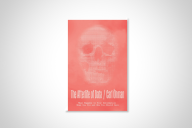You have /5 articles left.
Sign up for a free account or log in.
Until Michel Foucault mentioned him in passing in the first volume of his History of Sexuality (1976), the Viennese physician Heinrich Kaan’s role as the pioneer in medical research on paraphilias seems to have gone unnoticed. The title would have gone by default to Richard Krafft-Ebing, who published the first edition of his encyclopedic Psychopathia Sexualis in 1886. And the long disappearance of Kaan into that work’s shadow is even more unjust given that he was the first to use the title, more than 40 years earlier. (Kaan goes unnamed in the English rendering of Krafft-Ebing’s 12th edition -- whether the omission is the author’s or the translator’s I don’t know.)
As remedy to that neglect, Cornell University Press has published Heinrich Kaan’s “Psychopathia Sexualis” (1844): A Classic Text in the History of Sexuality, edited by Benjamin Kahan, an assistant professor of English and women’s and gender studies at Louisiana State University, in a translation by Melissa Haynes, a classicist at Bucknell University. Judging it “too dangerous to hand over to the general public” until “its utility and integrity can be proven,” Kaan wrote his treatise in Latin, but he hoped that it would meet with sufficient professional approval that he could arrange to have it “translated into a vernacular language such as French.”
The index contains reviews from medical journals of the day, which are decidedly mixed. One of Kaan’s peers vents his irritation that “people continue to belabor themselves and others” by writing in a dead language that is inadequate for modern purposes “even when it is masterfully employed!” The reviewer then strongly implies that Kaan is “among those who must still struggle with vocabulary and syntax” and “would do best to simply avoid it altogether.” Another critic praises it as “creditable to the author,” unlike most publications “on the revolting subjects of which it treats.”
Understandably, then, no clamor for a translation was heard in Kaan’s own day. “As far as I am aware,” Foucault said during his course of lectures for 1974-75 at the Collège de France, “it is the first treatise of psychiatry to speak only of sexual pathology but the last to speak of sexuality in Latin.” (Presumably Foucault meant that it was the last monograph to be composed solely in that language: Krafft-Ebing switched from German to Latin whenever it was necessary to describe deviant sexual behavior in potentially salacious detail.)
The liminal status of the first Psychopathia Sexualis -- its position near the end of a centuries-old mode of scholarly discourse and at the inauguration of a new disciplinary organization of knowledge -- render Kaan’s project interesting now in ways that it couldn’t be for its contemporary audience. The book’s structure and method now look peculiar. Kaan announces at the start that he was driven by “a desire to collect case studies, to examine them and from them to deduce general principles, and then to apply to them every kind of theoretical and practical knowledge and, thus, to derive from them rules useful to physicians.” But unlike Krafft-Ebing, much less Sigmund Freud, the author keeps those case histories (and his “deductions” from them) mostly to himself.
Instead, Kaan moves directly to a high level of generalization: plants, animals and humans alike are distinguished from the inorganic world by “the vital force [vis vitalis] by means of which the organism comes into being, is nourished and sustained.” This vital force subsists through two modes of reproduction, internal and external, corresponding to an organism’s nutrition and propagation, respectively. Kaan then gives an overview of the comparative anatomy of the sexual organs of plants, animals and (finally) humans.
What’s striking here -- especially given the text is written in a language with liturgical and theological associations -- is that Kaan begins and remains on a strictly naturalistic level of description and explanation. In discussing the stages of human sexual maturation, he notes that puberty “begins around the twelfth year in girls and the fourteenth in boys, at which age the Old Testament laws allow for marriage” -- but this, like Kaan’s few other scriptural citations, is given as historical background rather than divine revelation. He expresses a definite belief in “the absolute necessity for monogamy and marriage” without trying to demonstrate its necessity.
Insofar as customs in such matters differ around the world, Kaan implies that it can be explained as the product of variations in the intensity of the libido -- which are, in turn, the function of environmental, biological and psychological factors. The hotter the climate, the darker the skin and the closer to the land, as he posits it, the stronger the sexual drive.
The source of nutrition is also important: erotic gratification is experienced “most vigorously among cannibals, less so among carnivores and flesh eaters, and least of all among vegetarians.” Here we can only lament the author’s failure to disclose his research methods.
Kaan establishes (to his own satisfaction, at least) a scientific basis for taking the monogamous, heterosexual, procreative couple as normative. But medical experience has taught him that deviations are alarmingly frequent, even among European noncannibals. His treatise takes the initial steps toward understanding the range and etiology of sexual disorders and, ultimately, curing them. And in a way the title is his first contribution to the cause: he uses the expression “psychopathia sexualis” to subsume a few practices and preferences under a common heading.
“The types of these aberrations are numerous enough,” he writes, “but the most common are onanism or masturbation, the love of boys (paiderastia), lesbian love, the violation of cadavers, sex with animals, and the satisfaction of lust with statues.” He defines lesbianism as “an aberration that consists in the satisfaction of the sexual drive either between men or between women by means of tribadism, or rubbing” -- which, as definitions go, seems at once very broad and surprisingly unimaginative. Kaan does not elaborate on the statue kink, but Krafft-Ebing gives a number of examples.
The most remarkable thing about Kaan’s catalog is how brief and undetailed it is (even compared to Krafft-Ebing’s, less than half a century later). Furthermore, “these types of deviation are merely one and the same thing, and they cross into one another.” Having identified autoerotic activity as one form of psychopathia sexualis, Kaan soon informs the reader that it is not just the first on his list but the matrix of all the rest. Not that everyone who masturbates will go gay or interfere with public sculpture, to be sure, but it is a dangerous practice and should be discouraged in children. Among the availability modalities of treatment, Kaan especially recommends very cold water.
For reasons cultural historians continue to debate, masturbation was a topic of fierce public concern for more than a century before Kaan’s treatise and for just as long afterward. Self-satisfaction had been condemned on religious grounds before that, of course, but without generating anything like the alarm over its terrible effects on mind, body and soul that began in the early 18th century. One of Kaan’s reviewers grumbled about how he had added to what was already an enormous and very repetitious literature on the subject.
His Psychopathia Sexualis is far from the most hyperbolic or obsessive example of such discourse, but the 21st-century reader cannot help feeling that each medical warning -- every injunction to parents, teachers and other responsible adults to watch for and prevent autoerotic activity -- must have created the very disturbances they were supposed to prevent.
At the same time, the original Psychopathia Sexualis does more than repeat the old “thou shalt not” in nonreligious terms. As Foucault pointed out in his lectures, Kaan’s work had some important implications. It treated human sexuality as entirely explicable within nature -- with nonprocreative forms being, in effect, the accidental effect of a natural force being redirected via the brain: sexual deviations are caused by masturbation, which is, in turn, an activity engaging the imagination (i.e., an organic capacity of our species). Kind of obvious once you think about it, but not until then, and it was Kaan who, pardon the expression, mastered this domain.








